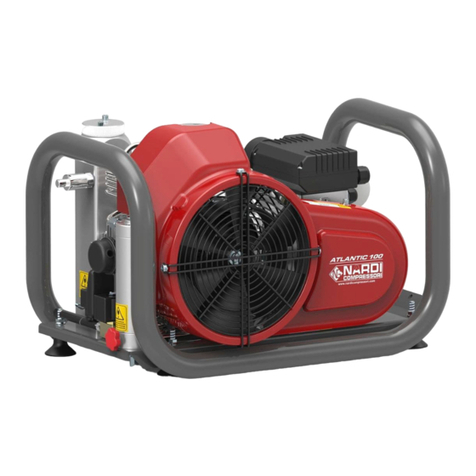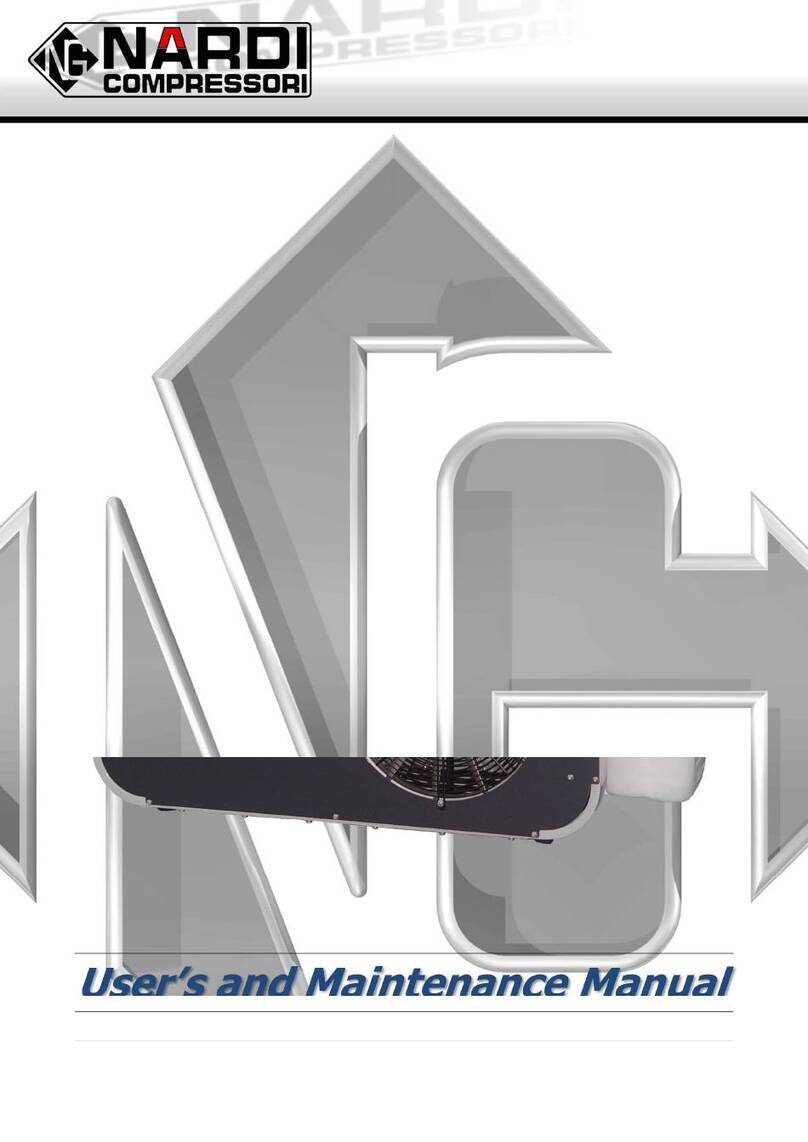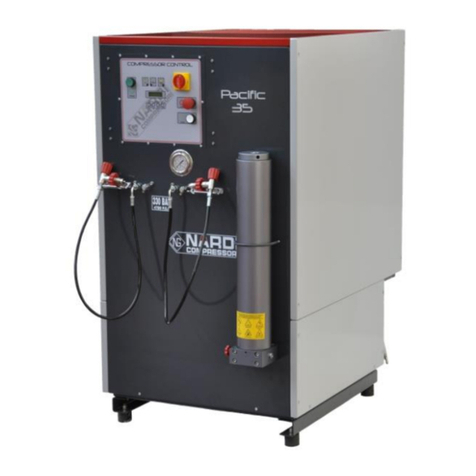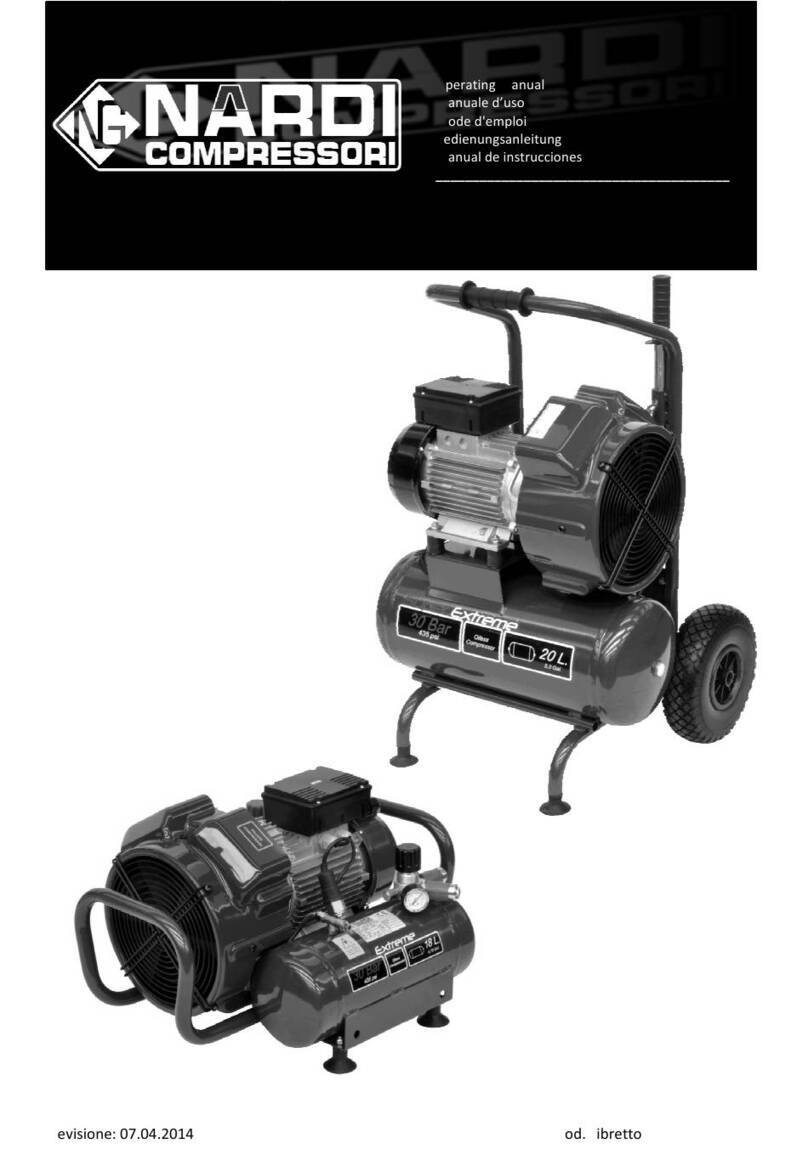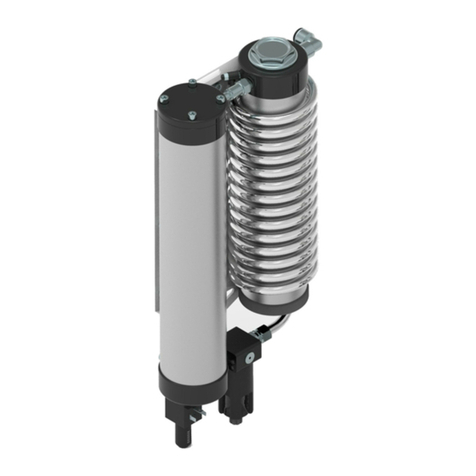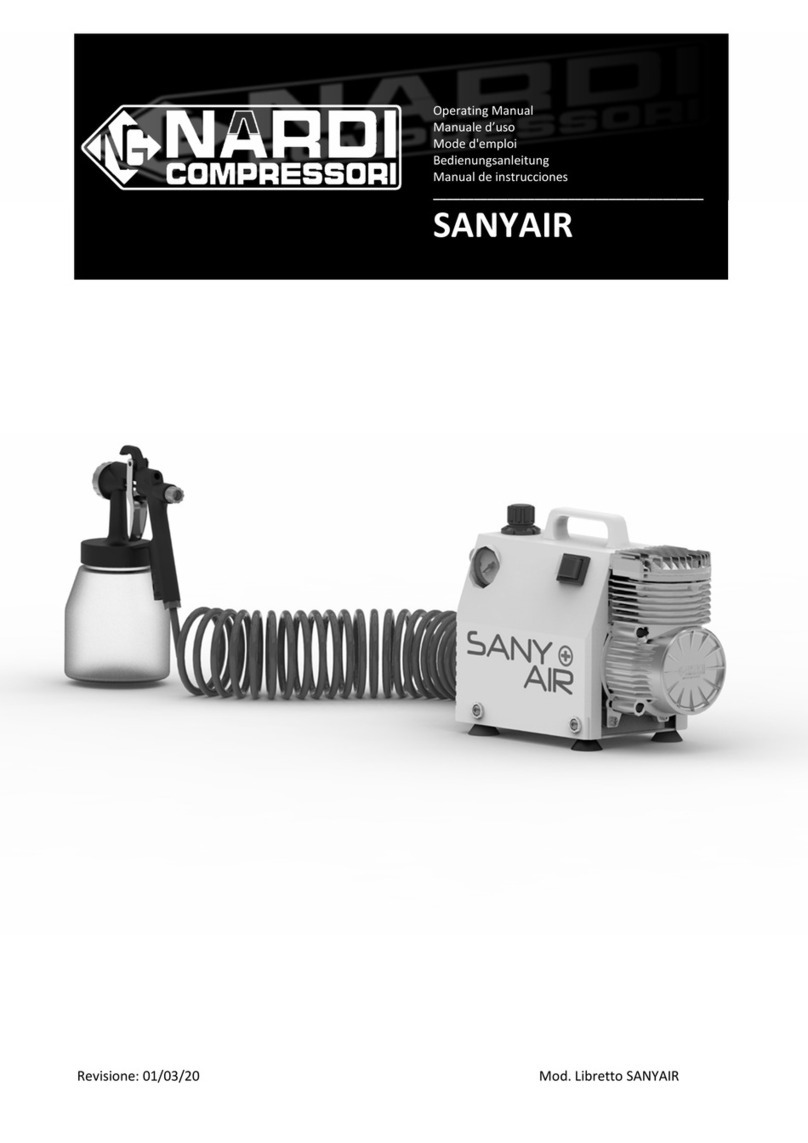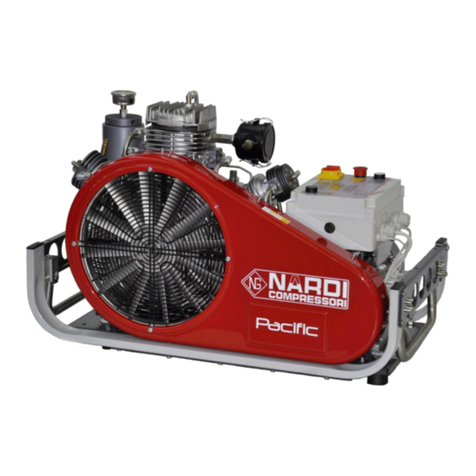
PACIFIC E23 – EG23
9 | P a g e
PACIFIC E23 – EG23 Rev.01
Nardi Compressori – www.nardicompressori.com
2 SAFETY REGULATIONS FOR THE USE OF THE COMPRESSOR
2.01 IDENTIFICATION OF SAFETY REGULATIONS FOR THE OPERATOR:
t is very important to check and be familiar with the potentially dangerous parts of the machine before
putting it into operation. n order to facilitate this, warning labels have been placed to identify the
following: High pressure, pressure valve, rotating fans, hot surfaces, etc.
Additionally, some components are mounted on the machine for accident prevention and global security that in the event
of malfunction or breakdown intervene so as not to cause danger to the life of the operators.
These components should always be present and cannot be removed or modified. n case of need contact our
technicians. The operator should make sure that the equipment and the safety components are in good working
condition at all times.
The compressor needs to be checked regularly by the operator and by technicians who will replace any worn or
damaged components.
2.02 SAFETY REGULATIONS FOR THE OPERATOR AND FOR THE PROPER USE OF THE
COMPRESSOR:
The operators of the compressor must have technical knowledge about breathing air, be aware of
current regulations and be familiar with the operation of the machine perfectly. n the case of
delegation of work, the operator of the compressor should take all necessary measures to inform the
next operator of all the maintenance operations required.
The compressor is designed to produce compressed breathing air in accordance with regulation D N EN 12021.
t draws air from the surrounding environment (the operator must make sure intake air is devoid of fumes and / or
harmful gases) and passing through an air intake filter it begins the cycle of compression / filtering until the air arrives at
the cylinder in high pressure.
2.03 SAFETY ESSENTIALS:
•Fill only inspected and tested cylinders and never exceed their working
pressure.
•The compressor must not take in fug, frowst or polluted air, it should not be
placed in areas where there is dust, danger of explosion, corrosion or fire.
•If the compressor is driven by a combustion engine, its use is prohibited in
closed environments. In any case, make sure that air intake is opposite to
the direction of the fumes coming from the engine. Refueling must be done
only when the machine is shut off.
•Make sure that when you service the machine or replace any spare parts on the compressor, it is
not pressurized and the power cable is disconnected from the power line.
•Regularly replace air filter cartridges only with genuine products from Nardi Compressori (tested
material).
•Drain the condensate regularly if the compressor has a manual drain. In the case of automatic
condensate drain check that this happens in periods not exceeding 10 minutes. Check daily the
operation by manually draining the condensate.
•When the compressor is not in use turn the power off, do not tug at the wire but use the plug to
unplug it. Make sure the power cable does not go against any sharp edges or bend at an angle
(in this case, it is recommended to use an extension).
•Periodically check the condition of the filling hoses (hoses for high pressure), especially near
the joints and if minor defects are present replace them. In any case, hoses must be replaced

